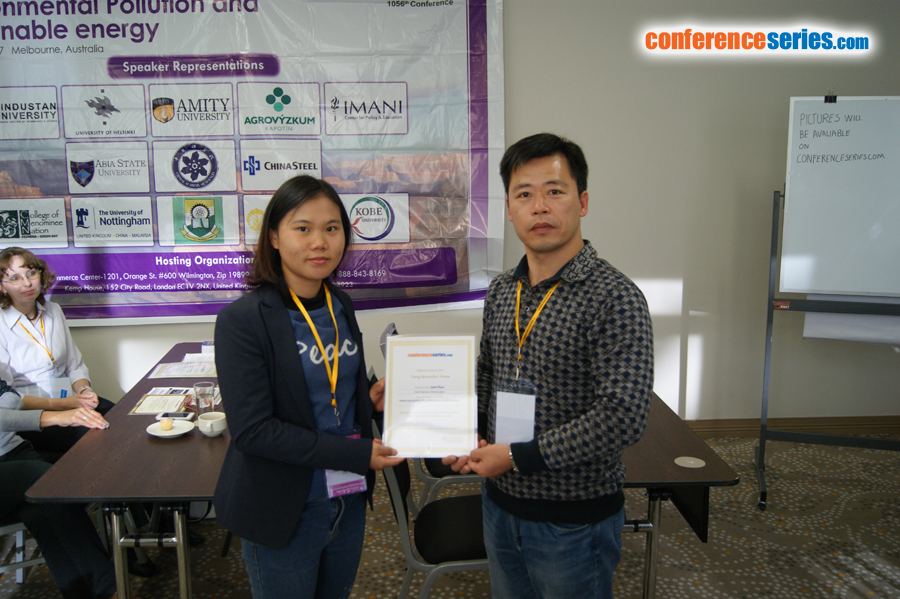
Oanh Pham
Osaka Prefecture University, Japan
Title: Emission source of PAHs in PM2.5 particle in ambient air of Sakai city, Osaka
Biography
Biography: Oanh Pham
Abstract
Statement of the Problem: PM2.5 whose diameter is smaller than 2.5 mm can travel through airway and deposit into lung tissue. Moreover, PM2.5 carries many harmful compounds including polycyclic aromatic hydrocarbons (PAHs), byproduct from incomplete combustion of organic materials. For better knowledge about PM2.5-bound PAHs (p-PAHs) in Sakai City, Osaka, we measured PAHs in gas phase and particle phase (PM2.5) and apportion the sources as well as assess the lifetime lung cancer risk (LLCR).
Methodology & Theoretical Orientation: Using the low volume air sampler (LVAS) with flow rate of 4 L min-1, particles and gas phase of PAHs were collected on glass fiber filter (GFF) and polyurethane foam (PUF), respectively. Samples were collected on the rooftop of 3-storey building in Osaka Prefecture University, Sakai City, Osaka, Japan. HPLC was used for analyzing 11 PAHs including phenanthrene, anthracene, fluoranthene, pyrene, benz(a)anthracene, chrysene, benzo(b)fluoranthene, benzo(k)fluoranthrene, benzo(a)pyrene, dibenz(a,h)anthracene, indeno(1,2,3-cd)pyrene. Diagnostic Ratios (DR) method for apportioning the PAH’s sources. Backward trajectory was used for tracing source location.
Findings: Main sources of PAHs were gasoline evaporation, vehicular emission and coal combustion. There was no significant correlation between PAHs and air pollutants (NOx, SO2, NMHC, etc.) at night time. The results showed that the gaseous PAHs were from local sources while the PM2.5-bound PAHs were from distant place. Backward trajectory results showed East Asia might be one of emission source’s locations of PAHs in PM2.5 in Sakai City, Japan. The mean TEQ and MEQ in particle phase values were higher than annually averaged standard of 1 ng/m3 of EPA.
Conclusion & Significance: Based on the TEQ values, Sakai City air were considered to be harmful to human health. Because atmospheric pollution is a global issue, there is a need for international policy about PM2.5 and harmful substances on it.

